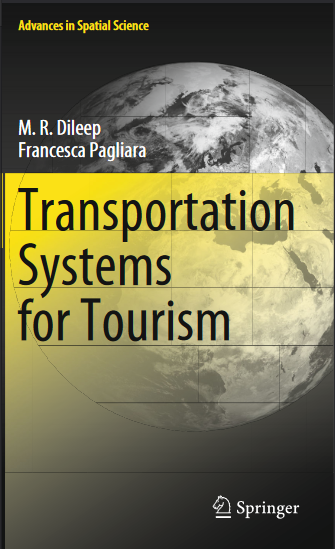موضوعات
آموزش و پرورش
ادبیات و زبان
پزشکی، دندانپزشکی و داروسازی
تاریخ و جغرافیا
داستان و رمان
دیگر
دین و فلسفه
روانشناسی
ریاضیات و آمار
سلامتی، تناسب اندام و رژیم غذایی
شیمی و پلیمر
علوم اجتماعی و حقوق
علوم زیستی و بیوتکنولوژی
فیزیک و نجوم
کامپیوتر و اینترنت
کتابهای کودکان و داستان
کسب و کار و اقتصاد
کشاورزی و دامپزشکی و غذا
معماری
مهندسی و فناوری
هنر و تئاتر
محصولات
Transportation Systems for Tourism - Original PDF
نویسندگان: خلاصه: The term “transportation system” is usually referred to the equipment and logistics of transporting passengers and goods. It covers the trips by all means of transport, from cars and buses to boats, aircraft, and even space travel. The objective of a transportation system is to coordinate the movement of people, goods, and vehicles in order to use routes most efficiently. When implemented, transportation systems seek to reduce transport costs and improve delivery times through effective timetabling and route management. Periodic re-evaluations and the development of alternative routes allow for timely changes to the transportation system to for increasing the efficiency. A standard transportation system will usually feature multiple timetables designed to inform the user of where each vehicle in the fleet is expected to be at any given point in time. These timetables are developed alongside an array of route plans designed to coordinate vehicle movements in a way that prevents bottlenecks in any one location. The main benefit of implementing a transportation system is delivery of goods and users to their destinations in a timely manner. This, in turn, increases the effi- ciency of vehicle use, as the same vehicle can be used for “multi-drop” jobs, such as bus services or home delivery networks, far more effectively when their routes are planned in advance rather than being generated “on the fly”. Transportation systems are developed in a wide variety of sizes. Local transport networks spanning the bus network for a city and its suburbs are common, as are country-wide delivery networks for haulage firms. Airlines use international transportation systems to coordinate their flights. The larger the distance being covered, the more effective the use of vehicles when a transportation system is used.آیا کتاب مورد نظر هنوز بر روی سایت قرار نگرفته است؟ جای نگرانی نیست! کافی است بر روی گزینه سفارش کتاب کلیک کرده و درخواست خود را ثبت کنید. در کمتر از چند ساعت کتاب شما را آماده خواهیم کرد.
